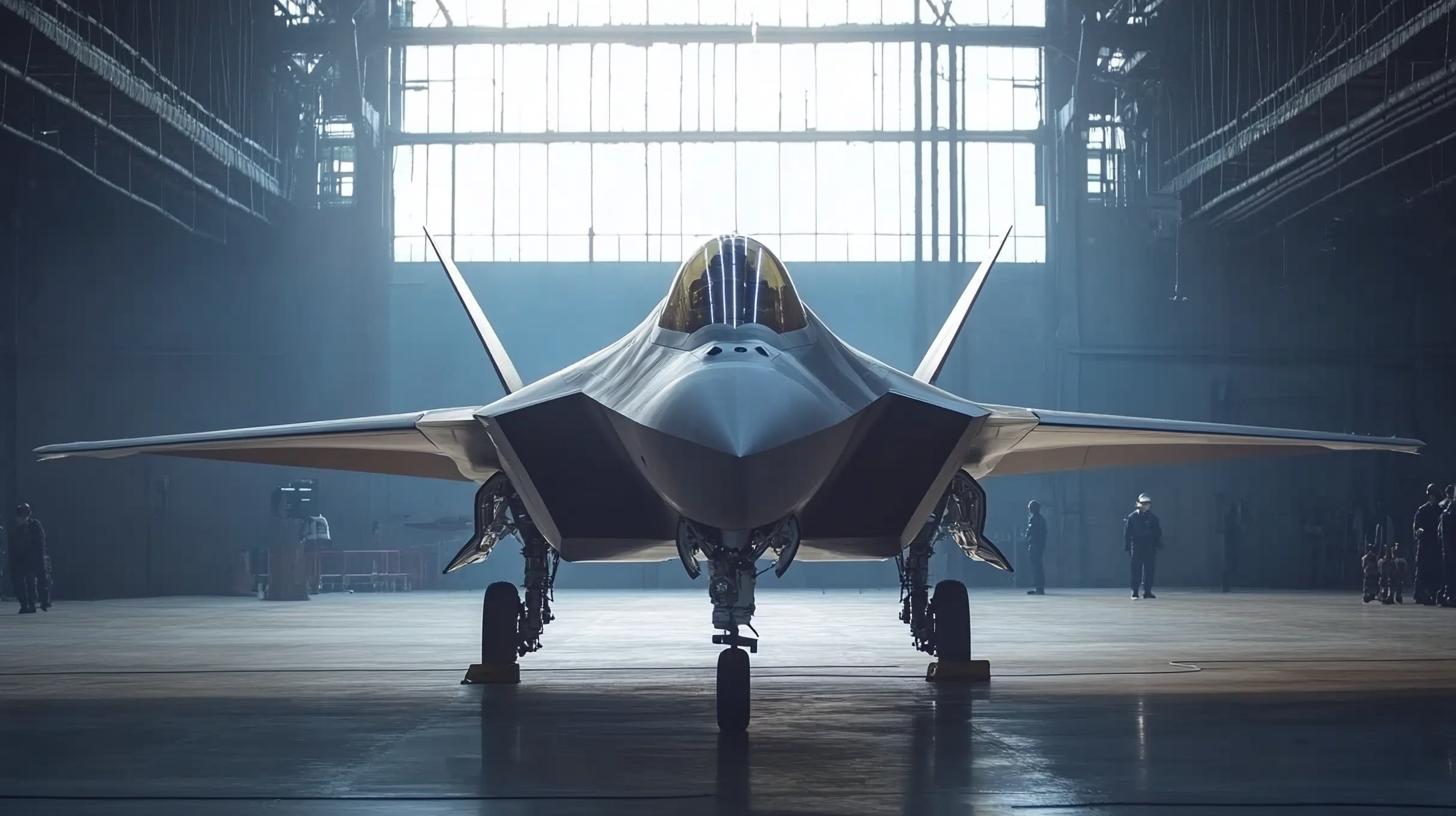The People’s Liberation Army Air Force (PLAAF) has announced its decision to integrate the J-35A stealth fighter into its fleet, focusing primarily on air combat capabilities. With this move, China becomes the second nation, after the U.S., to field two unique stealth fighter types.
A Cost-Effective Option: Unlike the larger Chengdu J-20, the J-35A offers a more budget-friendly, medium-weight solution. Its lower cost and shorter range could make it an ideal replacement for older non-stealth aircraft in the PLAAF’s arsenal. Despite not matching the range and speed of the J-20, the smaller J-35A is a practical addition to China’s air strategy.
The J-35A design, bearing similarities to the American F-35, hints at a low radar cross-section due to its aerodynamic features. Engineering choices like smooth surfaces and specific inlet designs contribute to its stealth capabilities, although actual radar evasion depends greatly on material and manufacturing intricacies.
A Strategic Addition: Having initially emerged from Shenyang Aircraft Corporation’s independent projects, the J-35A has evolved considerably over the years. From its debut in 2012 to its latest variant in 2023, multiple revisions have enhanced both its carrier and land-based versions.
The versatile J-35A could offer tactical flexibility within China’s potential military campaigns, serving different roles in a mixed fleet strategy alongside the J-20. With an easier market entry for countries unable to purchase F-35s, the J-35A also represents a major export opportunity for China. Pakistan has already shown interest, expressing plans to incorporate the aircraft into its fleet.
As China continues to adapt its military resources, the J-35A’s introduction might delay developing a sixth-generation fighter. Nonetheless, its immediate integration reflects an adaptive approach in an era of advanced aerial warfare.
The J-35A: China’s Stealth Game-Changer or Tactical Diversion?
China’s latest step in advancing its military technology, the integration of the J-35A stealth fighter into the People’s Liberation Army Air Force (PLAAF), marks a significant milestone in the nation’s air combat capabilities. This maneuver raises several questions about the broader implications for military strategy, technology development, and global arms dynamics.
Technological Leap or Detour?
The decision to incorporate the J-35A, a cost-effective medium-weight stealth fighter, deserves attention beyond its price point. An interesting fact is the aircraft’s striking resemblance to the U.S. F-35, sparking debates about technology transfer, intellectual property, and espionage. While China denies such claims, the similarities cannot be ignored and continue to fuel international controversies.
Impact on Global Military Dynamics
Another fascinating aspect of the J-35A’s deployment is its potential impact on global arms sales. The fighter’s lower cost and multi-role functionality could present competition for Western aircraft manufacturers. This development introduces a new player into the market, akin to the dynamics seen in the tech industry when disruptive startups challenge established giants. The J-35A opens avenues for countries, particularly those economically or politically distanced from Western suppliers, to bolster their air capabilities with an advanced fighter option.
Military Strategy: A Double-Edged Sword?
While the J-35A enhances China’s tactical arsenal, its introduction might delay the development of a more futuristic sixth-generation fighter. This presents a strategic conundrum: should nations focus on immediate enhancements with current technology, or invest heavily in next-gen developments with higher upfront costs but potentially greater long-term benefits? Both approaches bear their respective advantages and disadvantages, a reflection of the classic ‘now versus later’ dilemma.
Advantage or Overextension?
From a strategic perspective, the introduction of a versatile aircraft like the J-35A could increase China’s tactical flexibility. However, there’s a flipside. By emphasizing current technology, China might risk overextending itself, potentially spreading resources thin across different aircraft platforms, which could affect the speed and efficiency of further advancements.
A Shift in Tactical Philosophy?
Could the shift towards integrating aircraft like the J-35A suggest a changing philosophy in China’s military strategy? The focus on expanding capabilities rather than pushing the technological envelope may indicate a preference for reliability and versatility. How countries balance these priorities is crucial in understanding their long-term defense strategies.
Final Thoughts and Emerging Controversies
The J-35A’s place in China’s military arsenal prompts several inquiries. How will this affect global stealth fighter competition? Will it influence Western military strategy, or spur a greater push toward sixth-generation fighters elsewhere? These questions highlight the dynamic nature of military development in an era where technological prowess is closely linked to national power.
To stay updated on military advancements and global technology trends, explore Defense News.
Each of these facets underscores the complex interplay between technology, economics, and strategy, forcing us to consider the broader ramifications of China’s latest military acquisition. As the dust settles and the aircraft takes to the skies, the world watches keenly.







